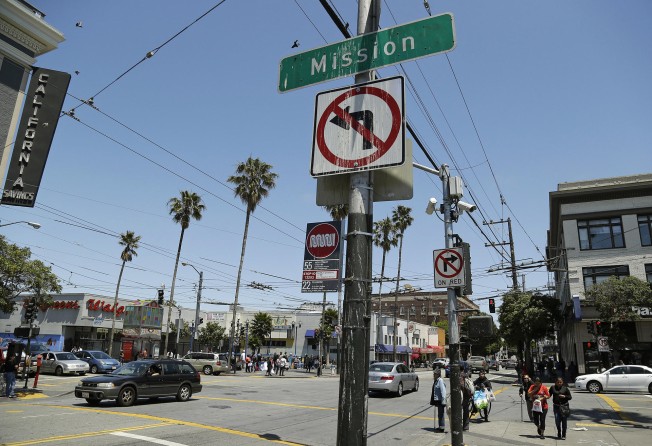San Francisco's Mission district split over call for moratorium on luxury projects
Soaring home prices in San Francisco are pushing out lower income residents, prompting calls for a moratorium on luxury developments

Check out rental sites for San Francisco, especially the trendier parts: well over US$3,000 a month for a one-bedroom apartment and nearly US$5,000 for two bedrooms.
Finding a place to live in the city has become so expensive and emotional that city supervisors are considering a 45-day moratorium on luxury housing construction in the Mission District, traditionally one of the most diverse, working-class neighbourhoods in San Francisco.
The area, long home to modest taquerias and corner markets, is now teeming with Silicon Valley workers and the pricey restaurants that cater to them.
Fancy high-rises are planned to take over dilapidated street corners, including one development that tenant activists have dubbed the "Monster in the Mission", a building with more than 300 units and rents projected to start at US$3,500.
The growth is pushing out longtime tenants, said hundreds of people who crowded San Francisco City Hall last month to support the moratorium and urge a time-out on evictions.
They say that working families, especially Latinos, are being forced out by housing developers and that city officials have a responsibility to fight back.
"It's a working-class environment. I have family here, and at the rate it's going, we're not going to have anyone we know close by," Hugo Vargas said.
The 16-year-old Vargas shares a small room with his parents and two younger sisters. Their space in a single-room occupancy hotel goes for about US$900 a month, and his parents, who earn about US$45,000 per annum combined, have applied unsuccessfully for years for a rent-controlled apartment that would give them more space.
A moratorium would give the city time to buy some of the land available in the Mission District in order to develop hundreds of affordable housing units for lower-income and middle-income families, activists say. Otherwise, they fear developers will snap up the property for even more high-priced units.
The district has lost lower-income and middle-income households, according to a recent study by the non-profit Council of Community Housing Organisations.
Families earning US$50,000 to US$75,000 made up a quarter of Mission households in 2000; today that number is 13 per cent. Households with incomes of at least US$100,000, meanwhile, have increased.
"It's trending into something that's not a working-class neighborhood," said Gabriel Medina, the president of the San Francisco Latino Democratic Club.
The vote by the city's Board of Supervisors on the moratorium proposal is largely symbolic, as the plan faces steep odds. But it is telling how officials are desperate to do something about housing in a city where the prices are among the nation's highest.
Dozens of moratorium opponents gathered at a City Hall rally last week. Organiser Derek Remski said officials should focus on growth, rather than attempts to artificially cap prices.
"We can't freeze the city in a block of amber," he said. "I don't want to fossilise San Francisco."
Three hours into the hearing, dozens were still waiting for their chance to speak. Most of those who took the podium were overwhelmingly in support of preserving lots in a city they called a safe haven for immigrants and the poor, the working class and artists.
"I hope, I pray, I yearn that San Francisco really becomes the city of St Francis," said the Reverend Amos Brown of the Third Baptist Church.
According to the city, more than two dozen projects would be affected by the ordinance, including the "Monster", formally named for its address, 1979 Mission.
Most of the development's units would be for rent, with a few dozen priced for sale to households earning roughly US$60,000 to US$145,000 a year, according to spokesman Joe Arellano.
A moratorium wouldn't solve anything, Arellano said.
"If you limit the supply of new housing, demand is still high. And rent and home prices will continue to go through the roof," he said.
The ordinance needs approval from nine of the 11 city supervisors to pass.